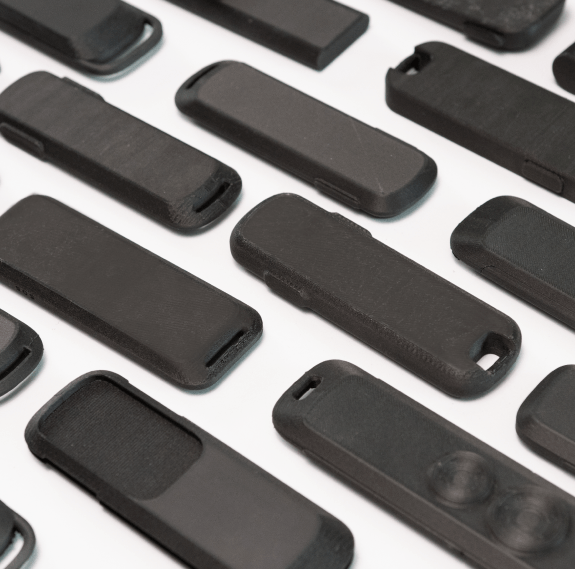Fresh Labs
Cobot Remote

Providing control and ensuring safety on human-robot worksites
Background
Industries across the spectrum have seen a rise in using robots to optimize and streamline workflows. Given the ability of robots to eliminate tedious tasks and automate dangerous work, the number of hybrid workspaces is only set to increase. Our team set out to bridge the communication gap between robots and people with a wearable remote that promotes transparency, safety, and productivity on construction sites.
Challenges
- Thinking through the complexity of human-robot interaction to promote seamless communication
- Building automated feedback mechanisms to alert managers if and when accidents occur
- Planning for future platform scalability to handle increasingly complex tasks like site cleanup, tool transportation, ditch digging, and material spraying, as well as challenges in other industries.
Services & Capabilities


Key safety features
The Cobot remote includes proximity sensing to pause robots that get too close to workers. Geofencing zones can be defined to alert people that they are entering dangerous areas and will also provide selective access to equipment and/or restricted spaces.
The Emergency All-Stop function is activated by simultaneously squeezing the two color-coded side buttons. This low-latency feature halts all onsite robotic and remote vehicle activity and alerts workers and safety managers of an incident.
A pause/resume function allows individual Cobots or remote vehicles to be temporarily disabled if headed to danger, needing assistance, or hindering human workflows.

Access and asset tracking
As workers enter the construction site, they will input their identification and be paired to a fully charged Cobot remote for the work day. An access profile is tailored to each worker and can be updated easily from anywhere. A system-wide overview of people, work zones, equipment, and accident data gives additional insight, which is critical in a fluctuating environment like construction.
Form, function, and usability
Our remote includes a rubberized grip and universal attachment hook so workers can easily carry it anywhere. Gloves & size negated the option to use a touch display for interaction, so we designed a more intuitive point & press method: point the remote at the desired robot and press pause or resume. Buttons were purposely oversized to enable workers to use the remote with bulky gloves.

The design process
Our team started by observing rituals, documenting workflows, and capturing the critical objects and details of human activity. We learned from our research that a device for this utility needed to be quickly accessible, easy to operate with gloves, simple to use (no training required), and durable and reliable enough to survive in harsh conditions.
We took a literal hands-on approach to solving this problem. Taking our concepts from paper to 3D printed models early allowed us to quickly narrow in on a hand & pocket-friendly shape. Testing with different gloves and hand sizes helped us to refine further and incorporate several tactile affordances needed to enhance the experience. The team focused on ‘subtraction,’ removing unessential components to deliver a simple, streamlined tool.




End-to-end teamwork and collaboration
The Cobot remote has been a successful collaboration between our design and engineering disciplines with each group providing critical input to its success at every stage. Our engineers are currently refining the functional prototypes for development.











